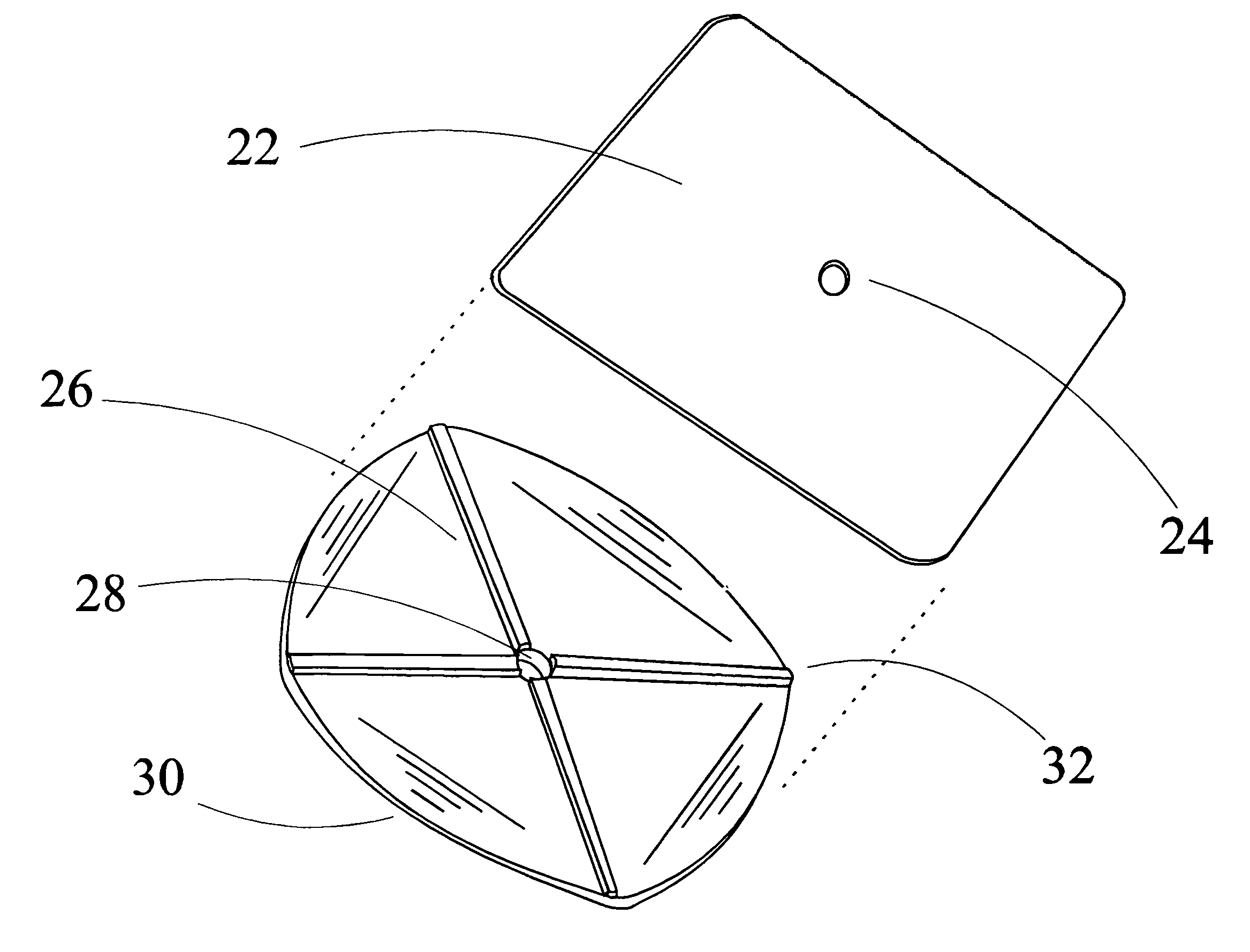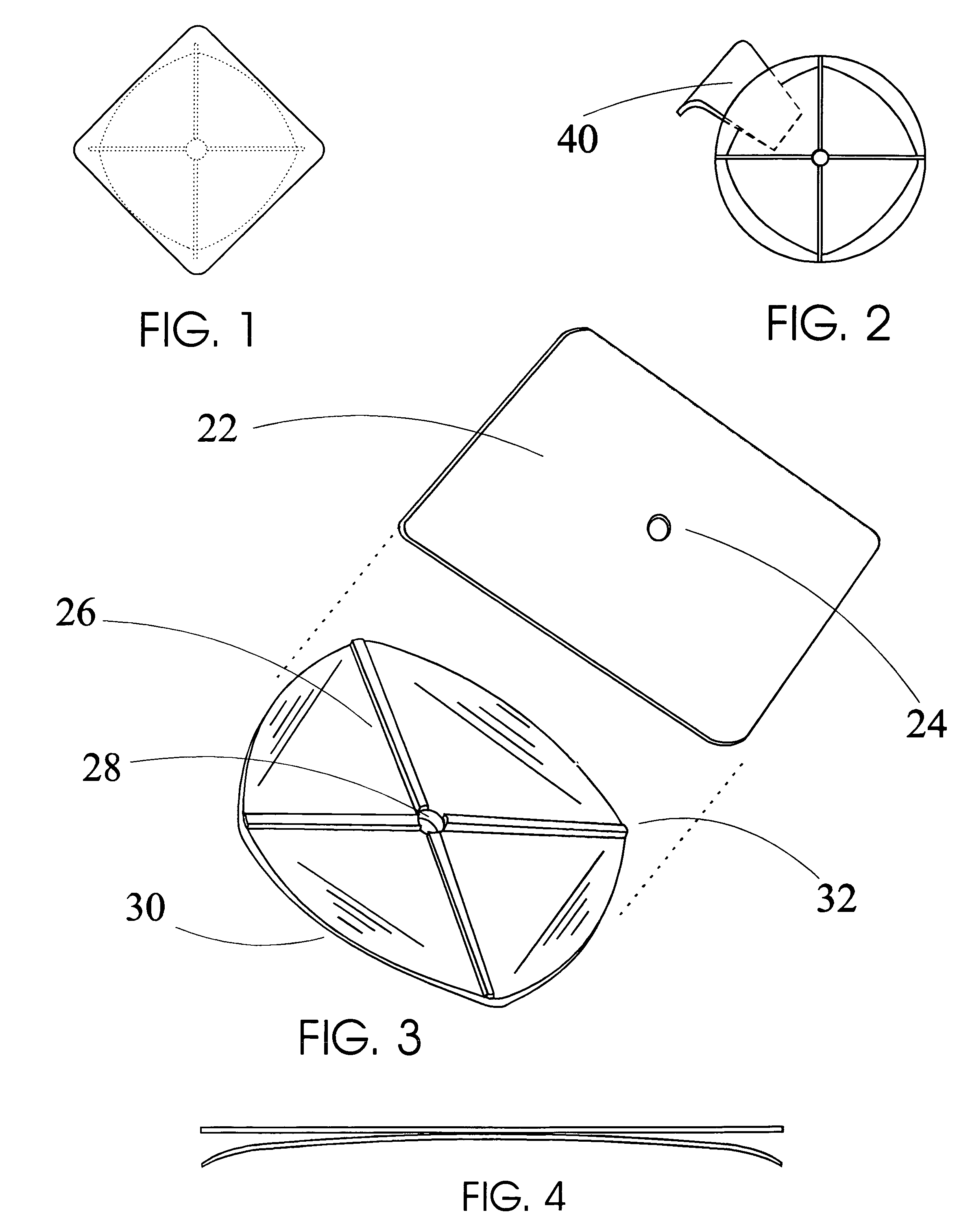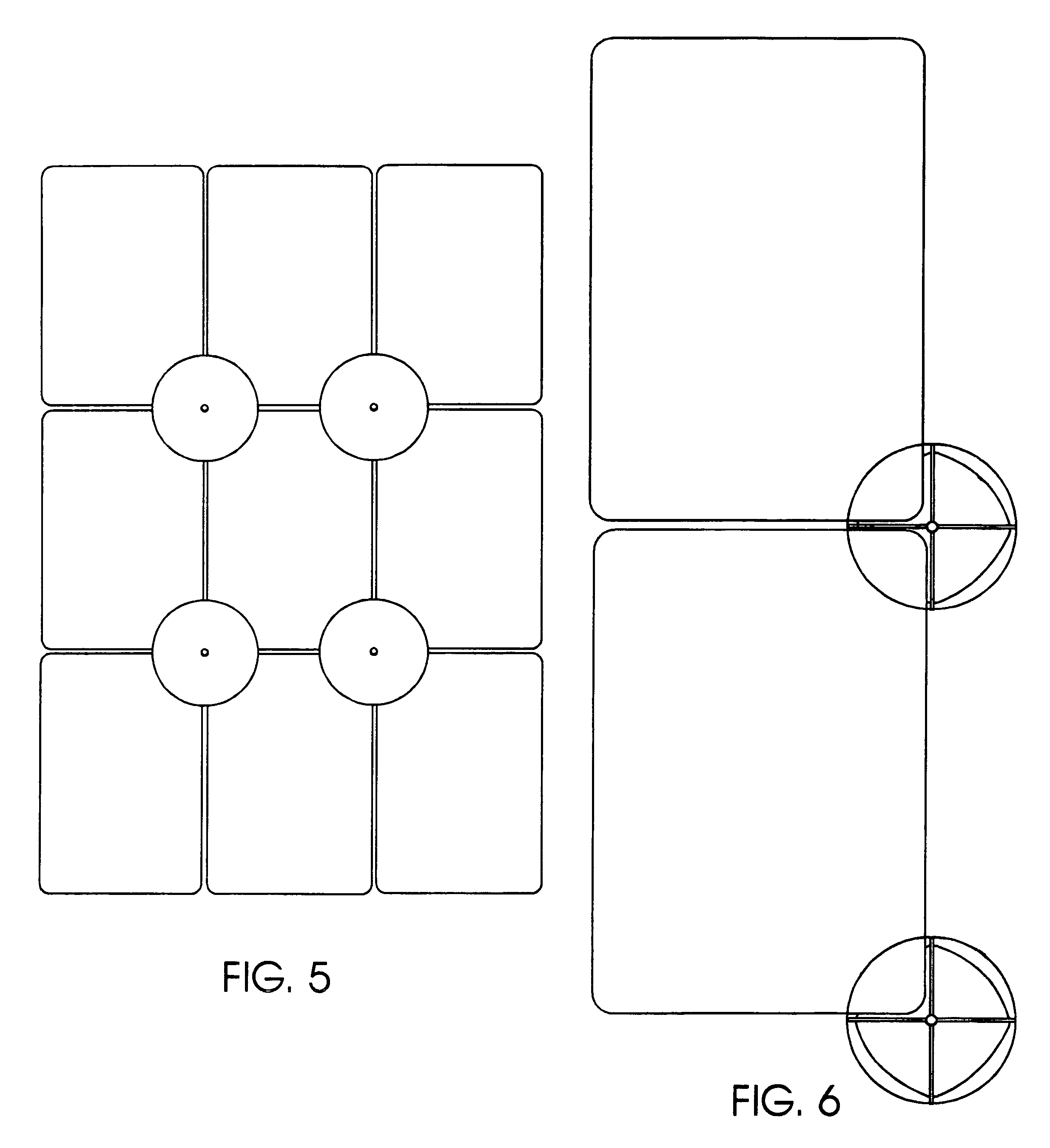Multi-item holder device and system
a multi-item, holder technology, applied in the direction of hose connection, coupling, rod connection, etc., can solve the problems of unattractive display, less aesthetically pleasing, difficult to re-position, etc., to achieve convenient transportation, easy to secure to the wall, and easy to take down relatively easily and quickly
- Summary
- Abstract
- Description
- Claims
- Application Information
AI Technical Summary
Benefits of technology
Problems solved by technology
Method used
Image
Examples
Embodiment Construction
[0077]
Front Plate 22Back Plate Tack Hole 28Tack Hole 24Tapered Edge 30Back Plate 26Raised Guide Edge 32
[0078]In a preferred embodiment, the front plate 22, is formed of a transparent, entirely flat, planar sheet of a colorless plastic. This provides for a viewer to see through front plate 22 to the display item(s) which can have little, if any, of its area otherwise obscured. Back Plate 26 can be made of most any type of material, but is preferably of the same material as that of the Front Plate 22 to offer Back Plate 26 a superior bond with Front Plate 22. A central a hole, Tack Hole 24, is made, for instance, through an integral injection-molding process, or it may be drilled or made with a tool with an industrial steel pointed pin. Tack Hole 24 should be wide enough to easily accommodate the insertion of a traditionally sized thumbtack. Tack Hole 24 may be obviated, if so desired, in other embodiments in which, for example, the center area of the device may display a stamped / embo...
PUM
 Login to View More
Login to View More Abstract
Description
Claims
Application Information
 Login to View More
Login to View More - R&D
- Intellectual Property
- Life Sciences
- Materials
- Tech Scout
- Unparalleled Data Quality
- Higher Quality Content
- 60% Fewer Hallucinations
Browse by: Latest US Patents, China's latest patents, Technical Efficacy Thesaurus, Application Domain, Technology Topic, Popular Technical Reports.
© 2025 PatSnap. All rights reserved.Legal|Privacy policy|Modern Slavery Act Transparency Statement|Sitemap|About US| Contact US: help@patsnap.com



